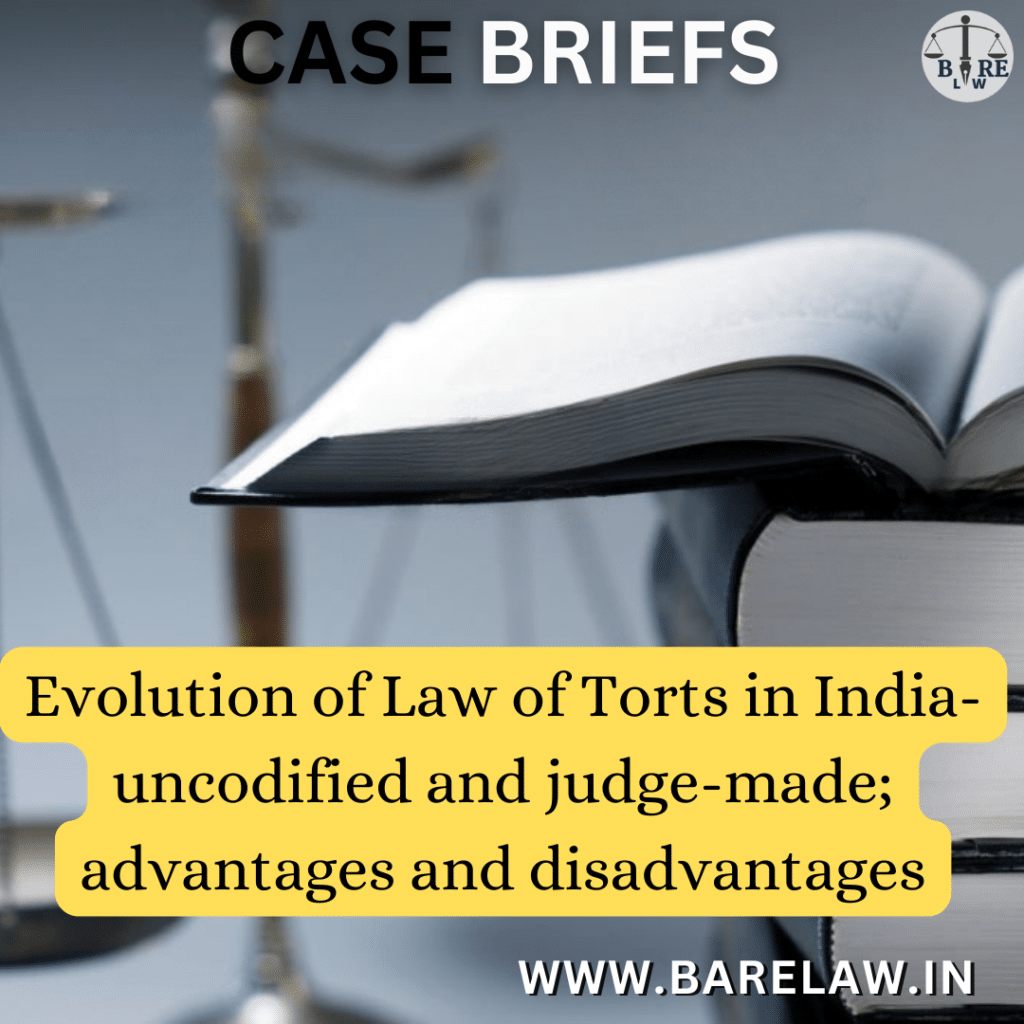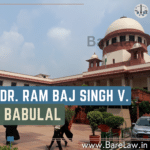
Evolution of Law of Torts in India- uncodified and judge-made; advantages and disadvantages
Table of Contents
Law of torts in India
The law of torts in India is a relatively new branch of evolving clustered law which needs to be supplemented by codifying statutes by bringing it under the ambit of one umbrella upon the basis of the maxim ubi jus ibi remedium. The law of torts in India is mainly based on the principles of the common law of England. The application of the law of tort is applied selectively in Indian courts keeping in mind if it suits the circumstances of Indian society.
Uncodified and Judge-made
Even after the promulgation of the Constitution of India, the law of torts remains uncodified. The law of torts in India is mainly judge-made, which means that the principles of tort law have been developed by judges through their decisions in cases. The Indian judiciary has played a significant role in the development of the law of torts in India.
Advantages
One of the advantages of the uncodified and judge-made law of torts in India is that it is flexible and can adapt to changing circumstances. The judiciary can develop new principles of tort law to address new situations as they arise. This flexibility allows the law of torts to remain relevant and effective in modern times.
Disadvantages
One of the disadvantages of the uncodified and judge-made law of torts in India is that it can be uncertain and unpredictable. Because the principles of tort law are developed through judicial decisions, it can be difficult to predict how a court will decide a particular case. This uncertainty can make it difficult for individuals and businesses to plan their activities and make decisions.
In summary, the law of torts in India is mainly judge-made and uncodified. One of the advantages of this system is that it is flexible and can adapt to changing circumstances. However, one of the disadvantages is that it can be uncertain and unpredictable.
Examples of judge-made law in the context of torts in India
In the context of torts in India, some examples of judge-made law include:
The principle of strict liability in the case of Rylands v. Fletcher, which holds that a person who brings something onto their land that is likely to cause harm to others is strictly liable for any harm that results, regardless of whether they were negligent or not.
The principle of vicarious liability, which holds that an employer can be held liable for the torts committed by their employees in the course of their employment.
The principle of contributory negligence, which holds that if a plaintiff contributes to their own injury, their damages may be reduced in proportion to their degree of fault.
The principle of negligence, which holds that a person who owes a duty of care to another must exercise that care, and if they breach that duty and cause harm, they may be liable for damages.
These are just a few examples of judge-made law in the context of torts in India. The law of torts in India is mainly judge-made, which means that the principles of tort law have been developed by judges through their decisions in cases. The Indian judiciary has played a significant role in the development of the law of torts in India.
significance of judge-made law in the context of torts in India
Judge-made law is significant in the context of torts in India for several reasons:
Flexibility: Judge-made law is flexible and can adapt to changing circumstances. The judiciary can develop new principles of tort law to address new situations as they arise. This flexibility allows the law of torts to remain relevant and effective in modern times.
Responsiveness: Judge-made law is responsive to the needs of society. Judges can develop new principles of tort law to address emerging social issues and concerns.
Development: Judge-made law is a key driver of the development of the law of torts in India. The Indian judiciary has played a significant role in the development of the law of torts in India.
Interpretation: Judge-made law is important for the interpretation of statutes. Judges can interpret statutes in light of the principles of tort law developed through their decisions in cases.
Clarity: Judge-made law can provide clarity and guidance on the application of the law of torts in India. The principles of tort law developed through judicial decisions can help to clarify the scope and application of the law of torts in India.
In summary, judge-made law is significant in the context of torts in India because it is flexible, responsive, drives the development of the law, helps to interpret statutes, and provides clarity and guidance on the application of the law.





